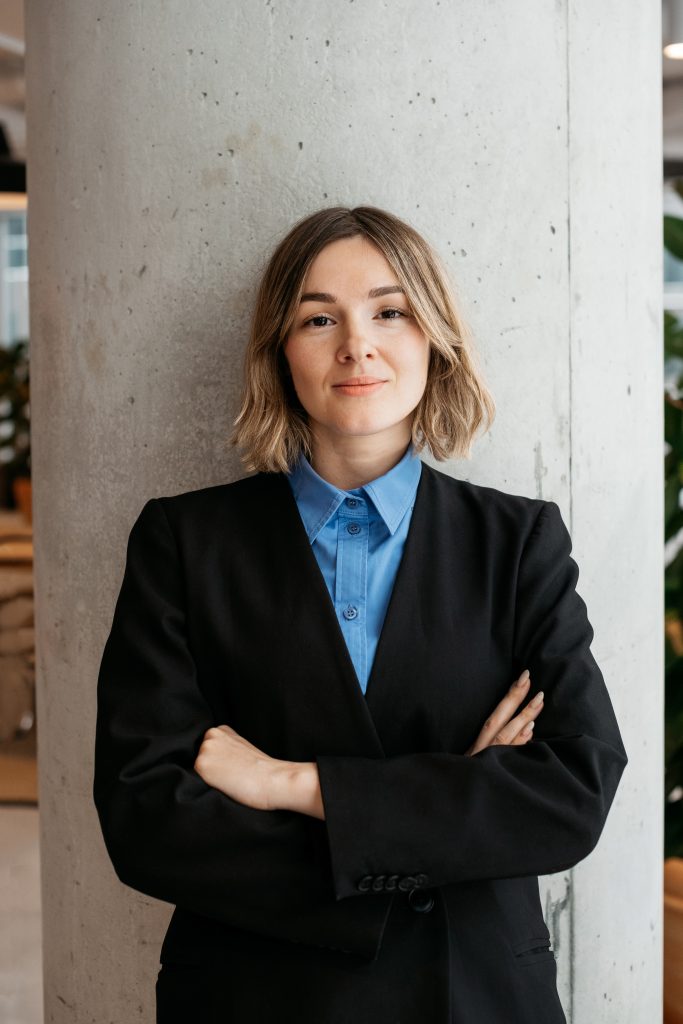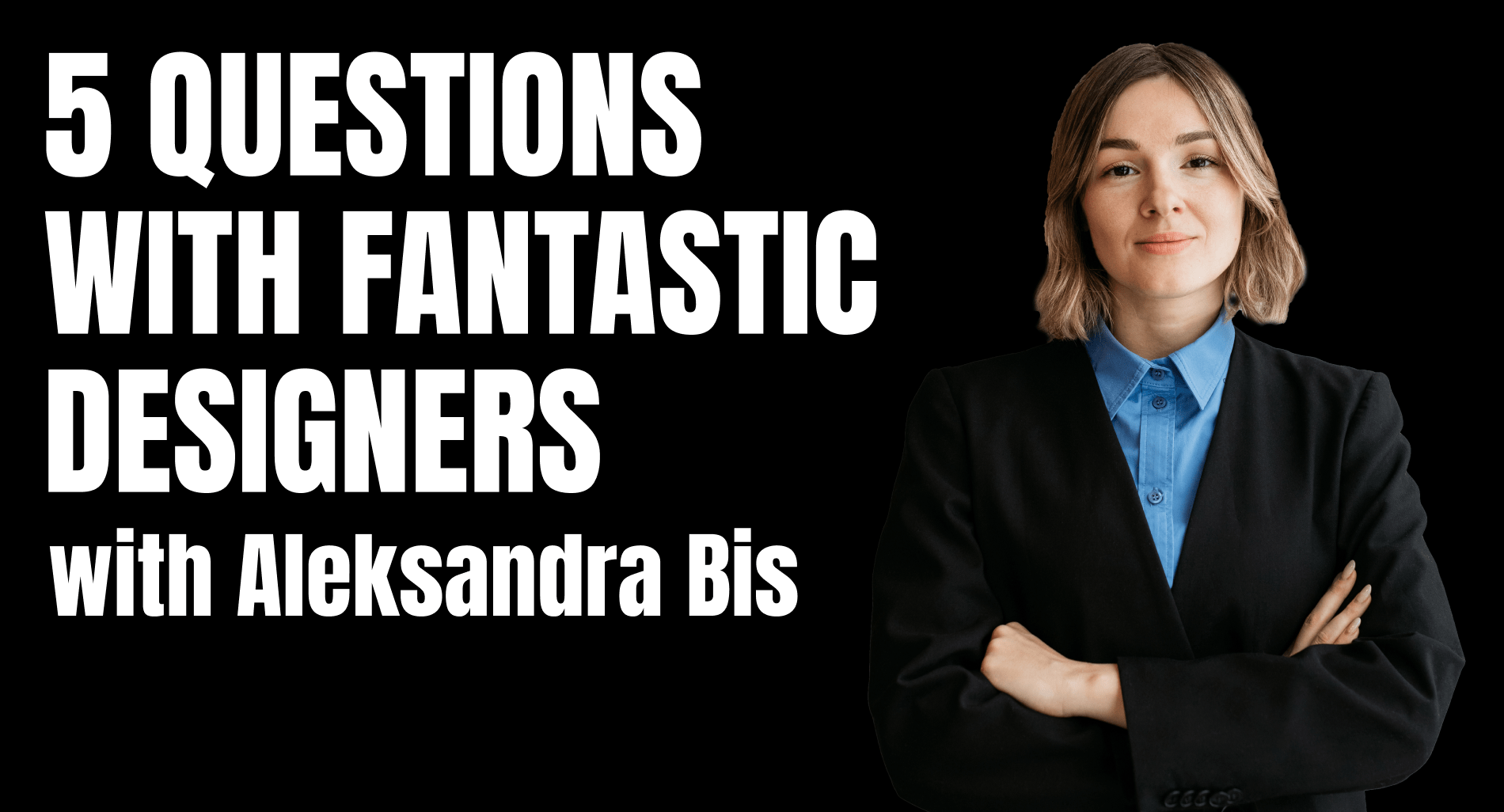
1.What design trends do you think will take off this year and more in the future?
Of course It’s difficult to predict what design trends will dominate in the nearest and further feature, as they can be influenced by many factors including cultural and industry shifts, or tech advancements. There are however some trends that might gain in popularity.
One of the big ones is AR/VR design. Despite the controversial subject matter, metavers is here to stay and is well on its way of becoming mainstream in the next few years. AR or VR technology is no longer in the realm of science fiction and we can already see huge investments in mateverse themes. Although it might present a variety of design challenges, virtual reality design and augmented reality design offer the opportunity to be at the frontiers of creating and designing an entirely new industry and to think how to elevate design standards instead of following a set of rules outlined by someone else. It’s definitely worth getting to know technologies surrounding VR and their applications – soon they will be needed in a variety of products and industries (retail brands are already using VR to create apps that enable users to try their products, e.g. Ikea, Place).
As we head further into the metaverse, we will continue using 3D elements even more in web and mobile design in order to create more immersive and realistic experiences. Although 3D has been with us for some time, now it becomes even more detailed, impressive and textured. Another trend that has been with us for a while (seems like forever even) and is not going anywhere is minimalism. However it seems that 2023 is going to be more “vibrant (and radiant), with colors that are bolder, brighter or shinier”. I’m definitely looking forward to seeing more bold color choices, maybe even psychedelic design, with overpoweringly bright and contrasting color schemes.
Wondering what can help us with bringing some of those crazy images to life? Think of AI for web design. You’ve probably heard what ChatGPT from Open AI has recently done for content creation, but the UX and UI field will continue to be influenced by artificial intelligence. Think not only generative graphics, but also generative components for UI. GTP-3 can already help you design interfaces by generating Dribble-like inspirations. What I definitely hope to see more of is accessible and inclusive design. From accessibility norms to inclusive visuals. Let’s just accept how diverse humankind is and strive to create solutions welcoming people from all backgrounds and abilities.
2.When it comes to making design and the design industry more diverse, equal, and inclusive, what changes are needed or would you like to see?
For me making design and the design industry more diverse goes hand in hand. Only diversified project teams have a practical chance to create fully inclusive products. In the community of people living with disabilities in the UK, they say “Nothing about us without us.” What would happen if we started practicing this approach, designing solutions for everyone around us?
Diversified project teams are more likely to constantly check facts and remain objective. They can also encourage greater scrutiny of each member’s behavior by keeping shared cognitive resources on alert. By breaking down homogeneity in the workplace, companies can allow their employees to become more aware of their potential biases (ingrained ways of thinking), which can make them blind to key information and even lead them to make mistakes in their decision-making processes.
Many organizations are taking a bold approach to the issue of inclusivity and expanding their teams to include representatives from different social groups. This is being done, for example, by Slack, but also by large financial companies such as Lloyds Banking Group and Tesco Bank (UK). Interest in the problem is also growing in the public sector due to the need to ensure accessibility in public services. How are organizations dealing with this in practice? When asked about the value of diversity in project teams, recruiting specialists from Slack say, “recruiting that is not done in a diverse population will not yield good results.”
For me the story of DEI is always a story of an untapped potential. I truly believe. Design has the power to be a force for good in the world, and as humanity, we are facing a number of threats that require all hands on deck to solve. From climate change and environmental degradation, to political unrest and economic inequality. The tech sector has the power to transform our lives – by limiting the participation of e.g. women in the tech sector, we are limiting our own potential to find solutions to the challenges we face.
Apart from being a designer, I run an impact business (Dare IT) supporting women in entering the IT industry and tech companies to hire high-potential diverse talent. We’re all about increasing women’s representation which currently constitutes only 17% of IT professionals in Europe. When working with women, I’m working with them not only to help them with their education and career-changing process, but also to fight the stereotype threat (a situational predicament in which people are or feel themselves to be at risk of conforming to stereotypes about their social group). For example, the widespread stereotyping of the IT industry may be so strongly encoded that women simply don’t see themselves in such industries or in specific roles. The peculiarities of highly masculinized environments, which may not suit everyone, may also be important. This is also connected with recruitment processes.
The design industry, like any other, is not immune to unconscious biases. Designers, studios and companies should be actively taking steps to be aware of their own biases and work on challenging them. This is why I’d love to see increasing representation of underrepresented groups through more continuous effort from companies to make their recruitment processes unbiased, provide inclusive training and education, and build a culture of inclusivity where everyone can feel safe sharing their perspectives and ideas.
3. What are the biggest challenges you had to face as a designer? Have you overcome them? How?
At this point I feel like a veteran of building (design) teams and products in adverse, high-stress circumstances. I know how to create products in quick, data-driven iterations – but each separate case was simply a challenge. At Varner she took over a newly formed team of 10 designers with extreme deadlines, and managed to make them deliver on time. At AirHelp she successfully navigated the design team through the travel industry’s toughest year (The COVID-19 pandemic), ensuring consistency despite a severe crunch on resources and motivation. And at Gyldendal I was responsible for successfully leading the product out of an extreme competitive race.
What definitely helped every single time was having a clear understanding of the project’s requirements and goals from the beginning, and then working closely with business and development on executing them. Another thing, although it might sound trivial, was being level-headed. Building digital products in a world of VUCA, pandemics and “black swans” is simply difficult and filled with challenges.
However, it’s worth remembering that every crisis is also an opportunity – and that’s how I look at it. Any chaos, while full of stress, also creates further opportunities and possibilities. It is worth being on the lookout for them.
4. Tell us about a book, podcast, or film, which you would recommend and why you would recommend it.
I always try to look for inspirations also outside our industry per se. I believe we can learn a lot from creators from all walks of life: equally so from Hans Zimmer talking about his creative process and Ray Dalio describing the way he makes decisions. But if I were to choose, I would recommend works by Naval Ravikant – from his series of podcasts on how to get rich to the book “Almanack of Naval Ravikant” which collects and curates his wisdom and experience from the past decade. I’m in awe of his ability to convey so much meaning in a few words. Apart from being a highly successful investor, Naval’s also one of the most interesting philosophers of the 21st century, who redefines what it means to be lucky and successful.

5. Why do you think design matters?
Design is a force for change that can affect many aspects of life. It is often up to us to determine how they will shape the world around us. Prudent design is not a panacea for all evil. However, used skillfully, it can become a tool for solving even the most serious problems.
We, as designers of digital solutions – that is, our second reality – have a great responsibility, but we also have an incredible opportunity and power to create good. We should harness our expertise and knowledge to put pressure on the sector, which in time will transform into work of understanding and devoid of exclusions.
Today we no longer design toys and gadgets, but services and products that change our approach to everyday life. The sooner we realize this, the sooner we can harness the power of collective thinking to solve the problems we face as humanity.










